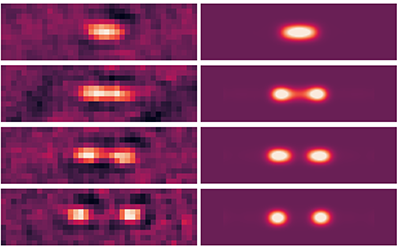 |
Our new article has been published in PRL and has received the Editors' Suggestion!
L. Cavicchioli et al. |
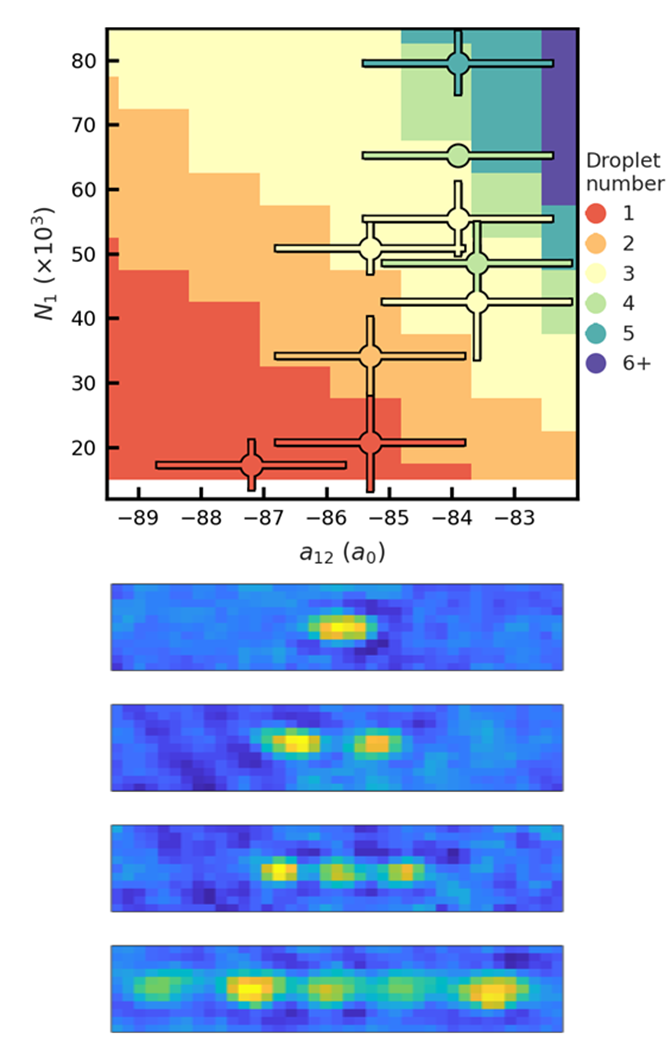 |
Just as a thin water jet emerging from a tap, a quantum atomic filament may break up into droplets: surprisingly, under some circumstances, quantum gases behave like liquids. In our lab, we prepare a quantum droplet of 41K and 87Rb, and release it in an optical waveguide. The droplet expands along the waveguide up to a critical length, and then splits into two or more sub-droplets. Our results can be explained in terms of capillary instability, previously observed in a variety of physical systems, including ordinary liquids and superfluid helium, but not yet in the ultracold gas realm. Getting curious? Look it up on the arxiv! L. Cavicchioli et al. |
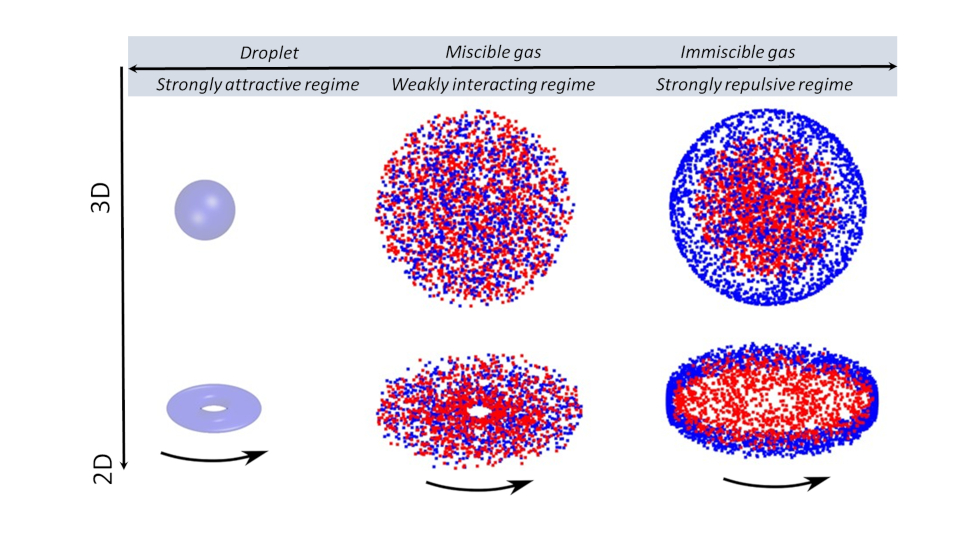 |
QUANTAMI (Quantum Atomic Mixtures: Droplets, Topological Structures, and Vortices) aims to explore novel matter phases and quantum phenomena arising in interacting multicomponent superfluids. We will exploit the K-Rb tunable quantum mixture manipulated in optical potentials to realize and study topological superfluid structures, like rings and shells, as well as exotic vortex states and rotating droplets. We will explore the complex interplay among interactions, quantum fluctuations, topological excitations and dimensionality. The project founded by MUR is a joint effort between CNR-INO (local coordinator Dr. A. Burchianti), the University of Padova (project coordinator Prof. L. Salasnich) and the University of Parma (local coordinator: Prof. S. Wimberger). Join us on this adventure! We are looking for motivated candidates for a postdoc position: further informations |
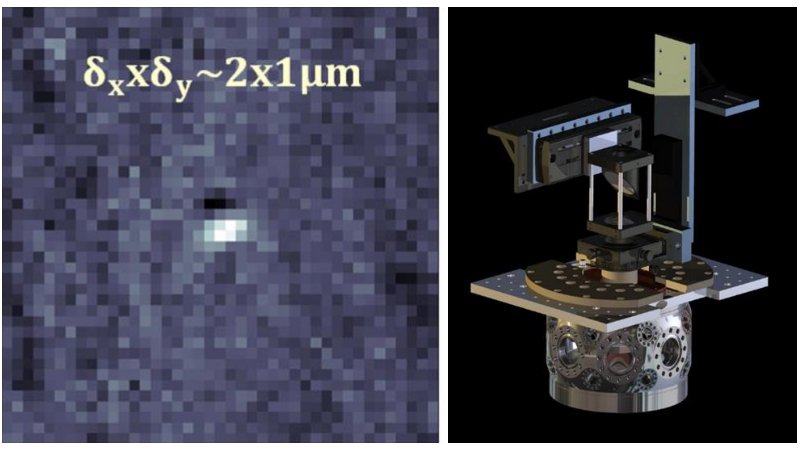 |
We have completed the design and testing of a custom high-resolution objective with a long working distance. The microscope consists of a commercial aspheric lens plus a meniscus lens and has a diffraction-limited resolution of 1.2 micron at 766 nm. We have performed some preliminary tests by recording the in-situ density distribution of a strongly attractive 41K-87Rb mixture. The measured size of the cloud is in agreement with the simulated density profiles in this interaction regime. We are going to detect our quantum mixture through its phase diagram with micrometric resolution! |
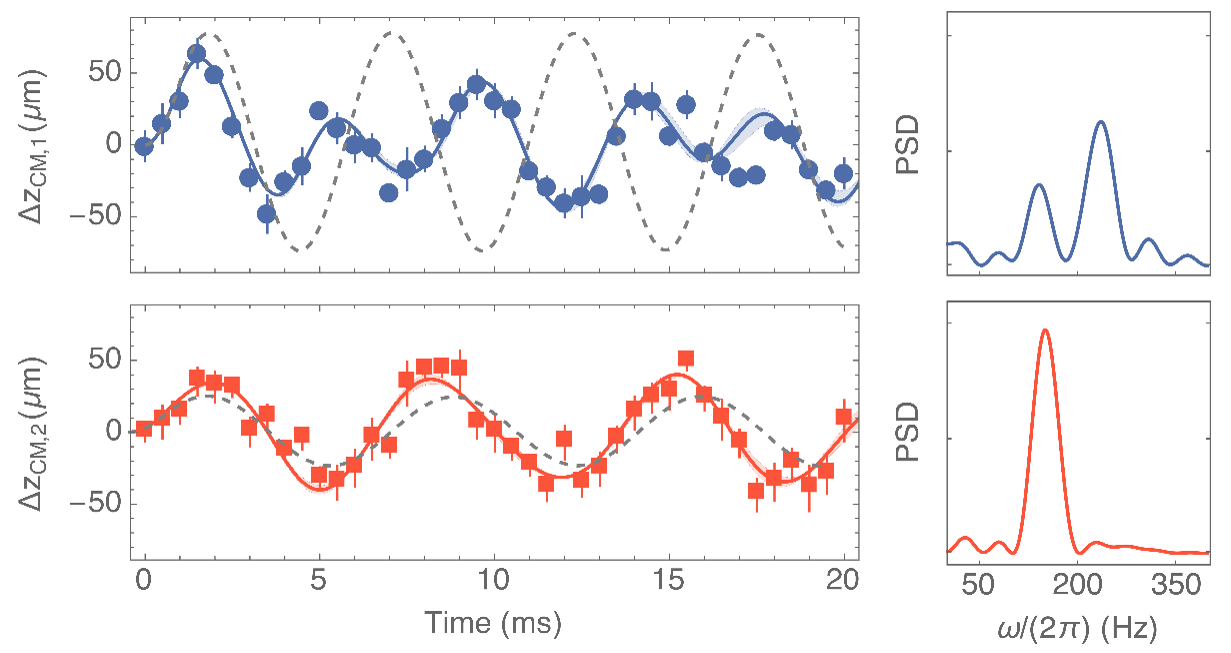 |
We studied the coupled dipole dynamics of a 41K-87Rb bosonic mixture as a function of the interspecies interaction. We measured both the frequency and the composition of the two dipole eigenmodes, from the weakly to the strongly attractive regime. For sufficiently strong interactions, even beyond the mean-field collapse, we found that the two condensates oscillate with the same frequency that depends only on the bare trap frequencies and the total mass of each species. This feature has been tested for a broad range of species population imbalance and has been demonstrated to agree with theoretical predictions. L. Cavicchioli et al. |
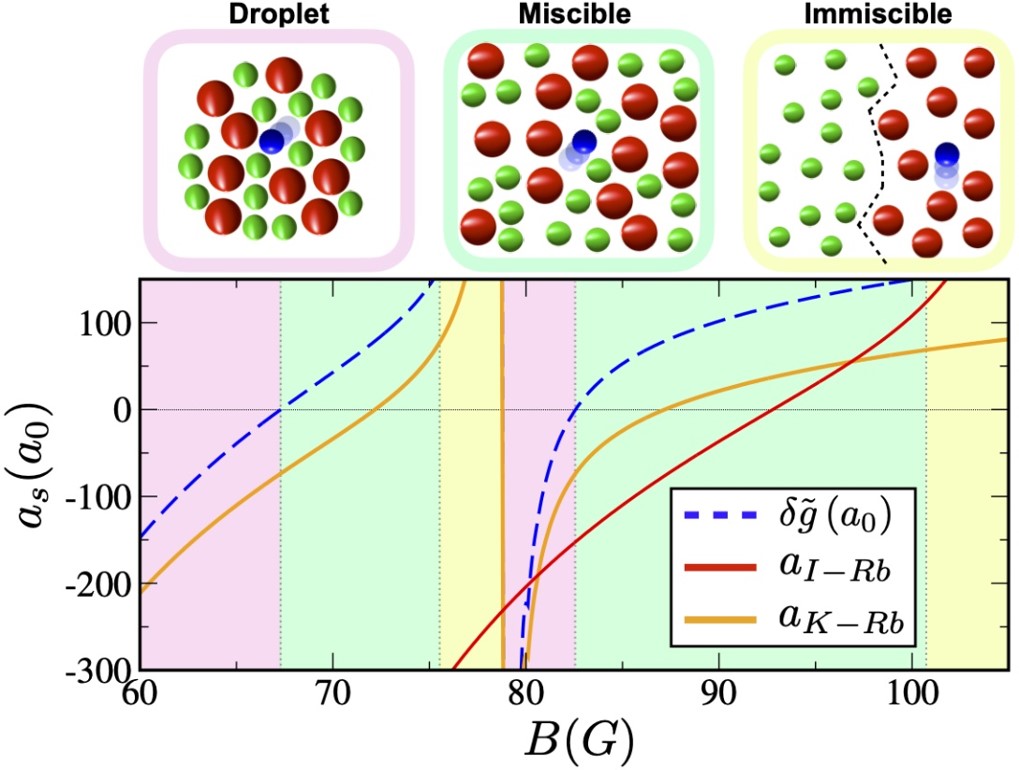 |
Together with Giacomo Bighin and Tommaso Macrì, we studied the problem of a mobile impurity immersed in a bosonic mixture. We focused on the experimental relevant case of a 41K−87Rb mixture, prepared in its ground-state, with the impurity consisting of a few 41K atoms in the second-lowest hyperfine state. We provided a compressive picture of the impurity across the mixture phase diagram. In the droplet phase, under realistic experimental conditions, we found exotic bound-states where the impurity localized either at the center or at the droplet surface. Our findings provide new insights for the study and detection of Bose polarons in collisionally stable and long-lived Bose mixtures such as the 41K-87Rb one. G. Bighin et al. |
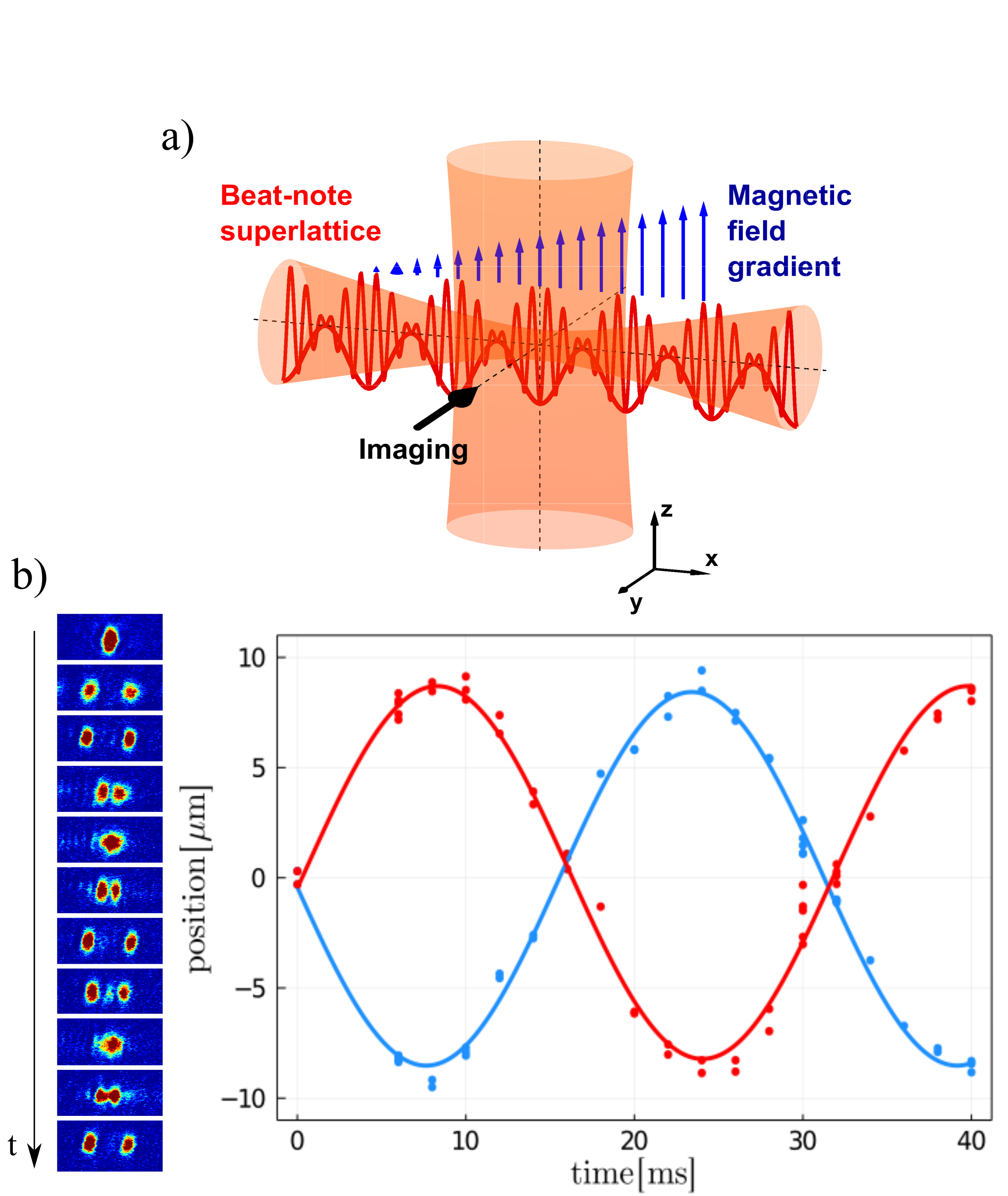 |
Atom interferometry with trapped samples offers the advantage of long interrogation times in compact setups, measuring forces and local fields with spatial resolution of a few micrometers. Here, we experimentally demonstrate a multimode interferometer comprising a Bose-Einstein condensate of 39K atoms trapped in a harmonic potential, where the interatomic interaction is canceled exploiting Feshbach resonances. A pulsed optical lattice coherently splits the BEC in multiple momentum components (Kapitza-Dirac diffraction), that form different interferometric modes oscillating in the harmonic potential along separate trajectories. When these trajectories recombine after half- or full-oscillation period, a second Kapitza-Dirac diffraction reshuffles the momentum components, i.e. the interferometer modes: the relative modal amplitudes at the interferometer output are sensitive to external forces, through the induced displacement of the harmonic potential. We characterize the interferometer performance and discuss perspective improvements. L. Masi et al. |
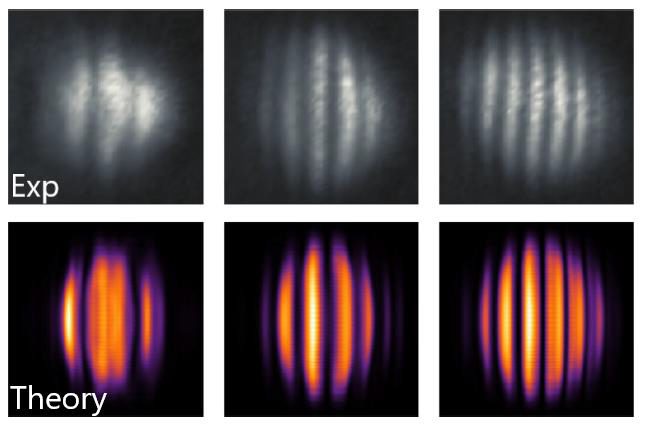 |
We have experimentally and theoretically studied how the interactions affect the interference pattern of two expanding 87Rb condensates. Our analysis shows that the condensate phase is modified by the mutual interaction only in the region where the wave packets overlap. This result proves that the general assumption of phase rigidity has to be abandoned for an accurate description of matter-wave interference. A. Burchianti et al. |
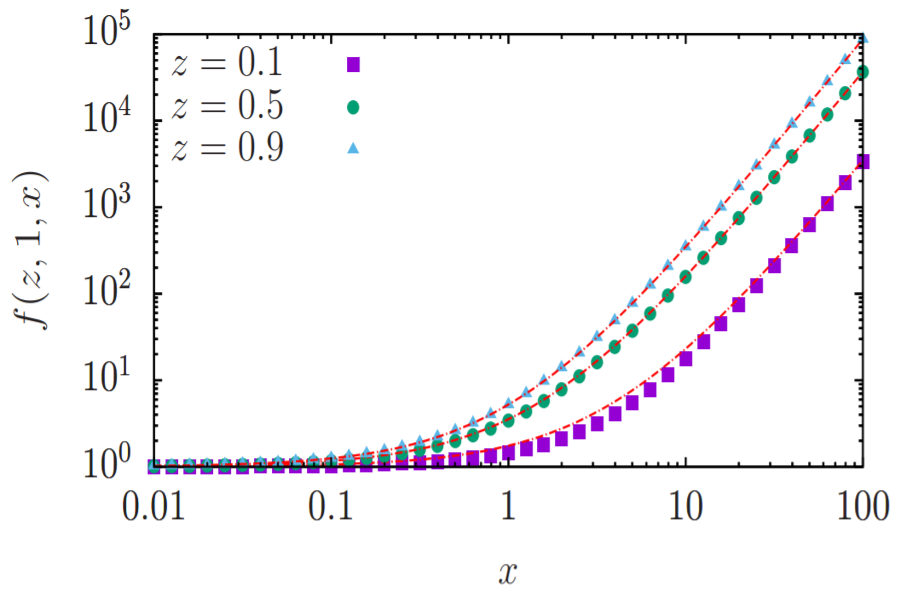 |
We show that the Lee-Huang-Yang (LHY) energy functional for a heteronuclear Bose mixture can be accurately approximated by an expression that has the same functional form as in the homonuclear case. It is characterized by two exponents, which can be treated as fitting parameters. We demonstrate that the values of these parameters which preserve the invariance under permutation of the two atomic species are exactly those of the homonuclear case. Deviations from the actual expression of LHY energy functional are discussed quantitatively. F. Minardi et al. |
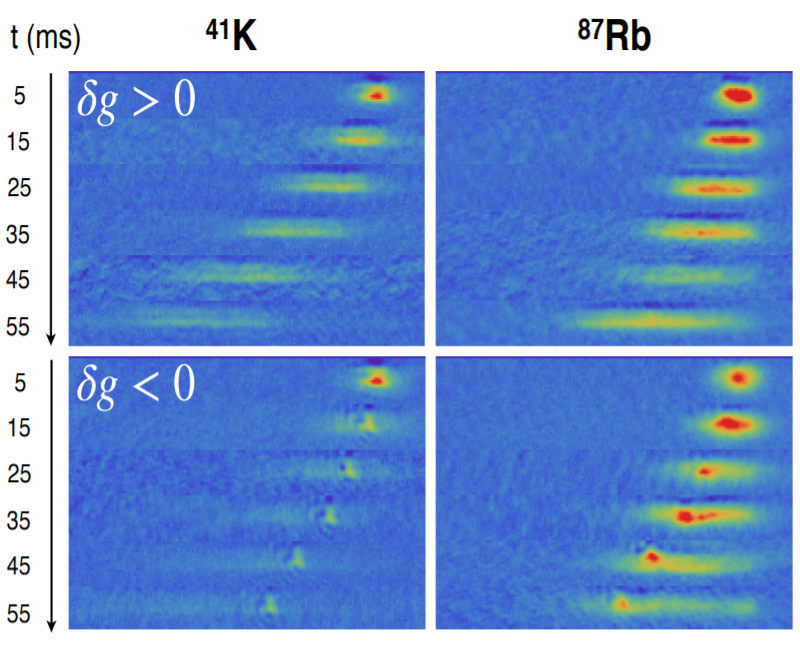 |
We report on the formation of heteronuclear quantum droplets in an attractive bosonic mixture of 41K and 87Rb. We observe long-lived self-bound states, both in free space and in an optical waveguide. In the latter case, the dynamics under the effect of a species-dependent force confirms their bound nature. By tuning the interactions from the weakly to the strongly attractive regime, we study the transition from expanding to localized states, in both geometries. We compare the experimental results with numerical simulations and we find a good agreement in the full range of explored interactions. C. D'Errico et al. |
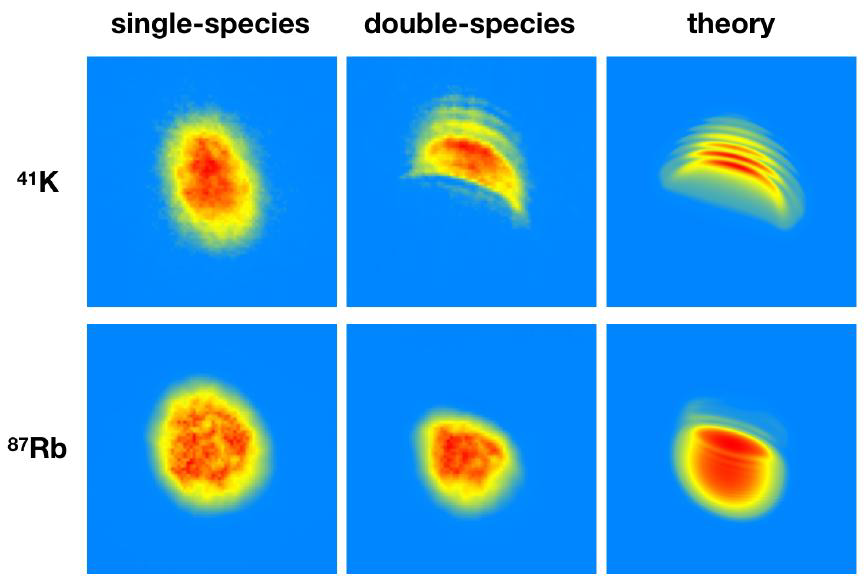 |
We report on the production of a 41K−87Rb dual-species Bose-Einstein condensate in a hybrid trap, consisting of a magnetic quadrupole and an optical dipole potential. After loading both atomic species in the trap, we cool down 87Rb first by magnetic and then by optical evaporation, while 41K is sympathetically cooled by elastic collisions with 87Rb. We eventually produce two-component condensates with more than 105 atoms and tunable species population imbalance. We observe the immiscibility of the quantum mixture by measuring the density profile of each species after releasing them from the trap. A. Burchianti, et al. |
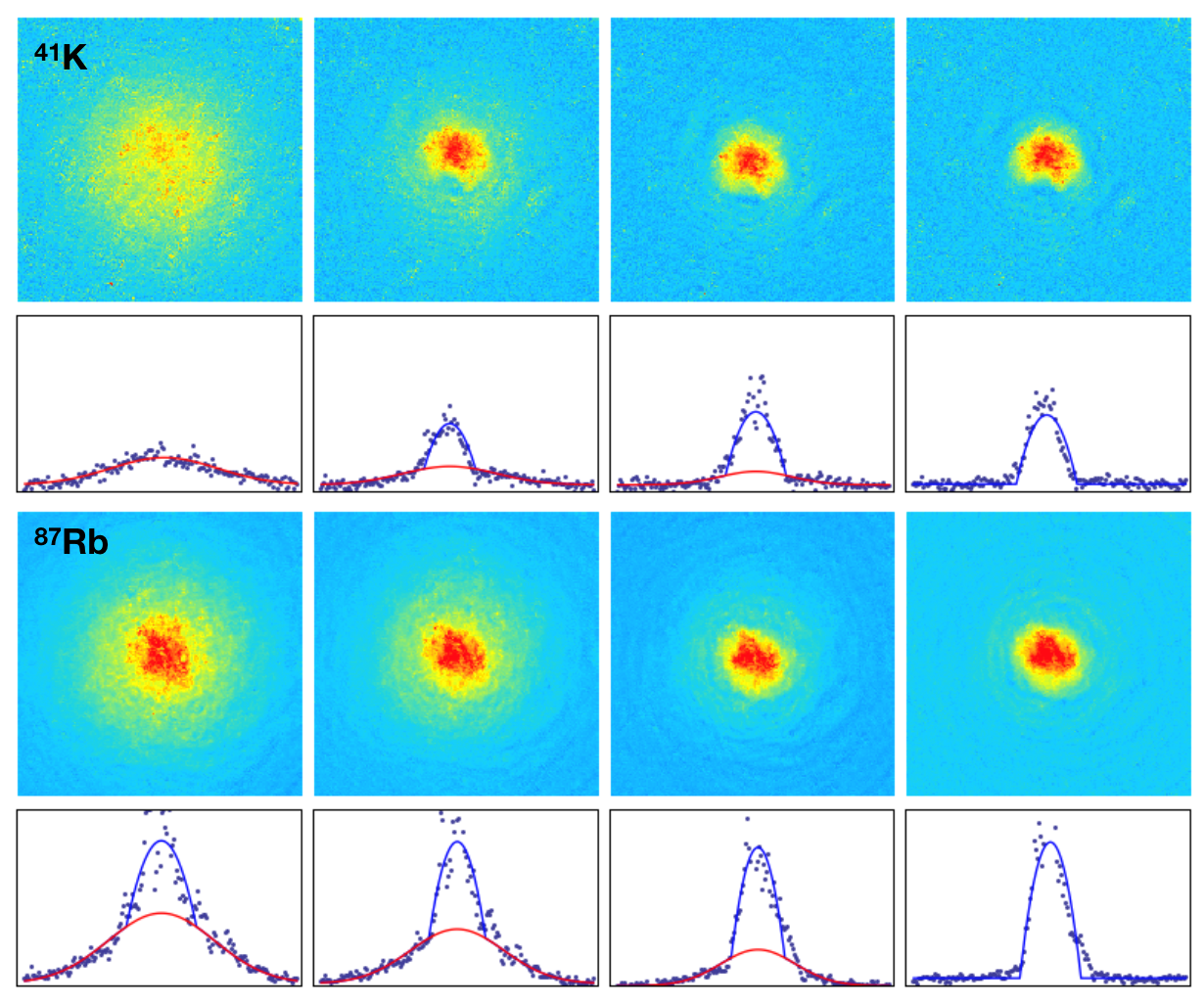 |
We have realized a double-species Bose-Einstein Condensate of 87Rb-41K both in the F=2, mF=2 hyperfine states. The preparation of the superfluid mixtures involves different cooling stages. After a double-MOT phase we transfer the mixture in a magnetic quadrupole field where Rb is evaporated by a microwave radiation resonant on the (F=2, mF=2) - (F=1, mF=1) transition while K is sympathetically cooled by thermal contact with Rb. When the temperature is low enough, we transfer the mixture in a crossed optical trap through an intermediate stage of a hybrid magneto-optical trapping potential. The last stage of cooling is performed by pure optical evaporation in the crossed optical potential. At the end of our typical experimental runs we produce pure condensates of 6×104 atoms for both atomic species. |
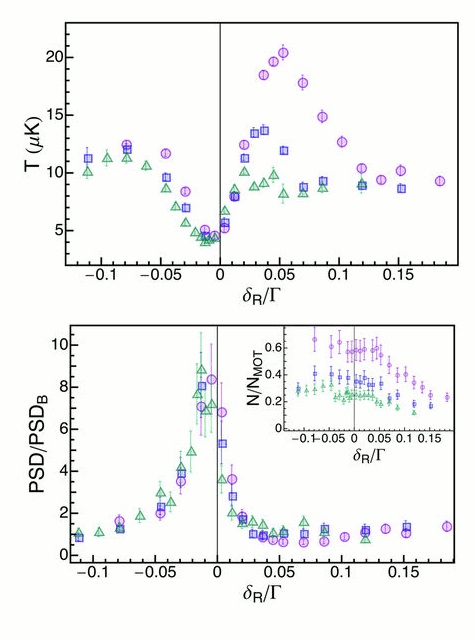 |
Laser cooling based on dark states, i.e. states decoupled from light, has proven to be effective to increase the phasespace density of cold trapped atoms. Dark-states cooling requires open atomic transitions, in contrast to the ordinary laser cooling used for example in magneto-optical traps (MOTs), which operate on closed atomic transitions. For alkali atoms, dark-states cooling is therefore commonly operated on the D1 transition nS1/2 → nP1/2. We show that, for 87Rb, thanks to the large hyperfine structure separations the use of this transition is not strictly necessary and that “quasi-dark state” cooling is efficient also on the D2 line, 5S1/2 → 5P1/2. We report temperatures as low as (4.0 ± 0.3) μK and an increase of almost an order of magnitude in the phase space density with respect to ordinary laser sub-Doppler cooling. S. Rosi, et al. |
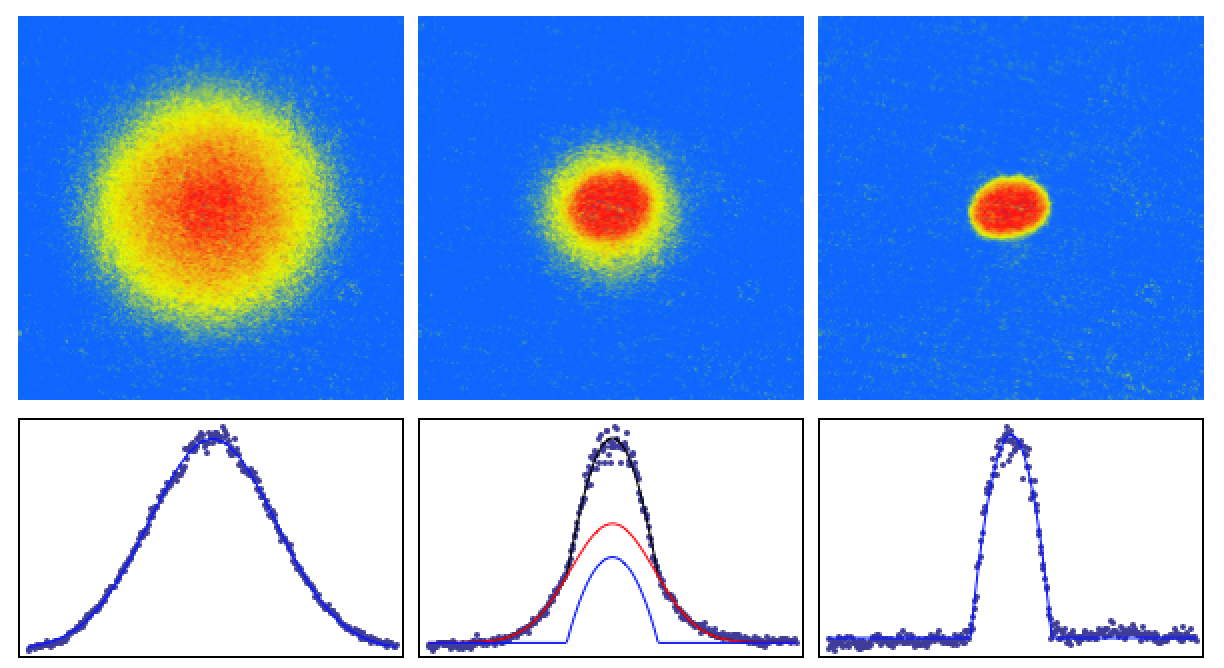 |
We achieved a 87Rb condensate of 4⨯105 atoms in the F=2, mF=2 state. We use a hybrid trap consisting of a single focused laser beam at 1064nm (dimple) in the horizontal direction and a quadrupole magnetic field. The dimple is vertically shifted with respect to the quadrupole center to avoid Majorana spin-flips. A first evaporation ramp with a microwave driving the (2,2) to (1,1) transition, is followed by an optical evaporation. |
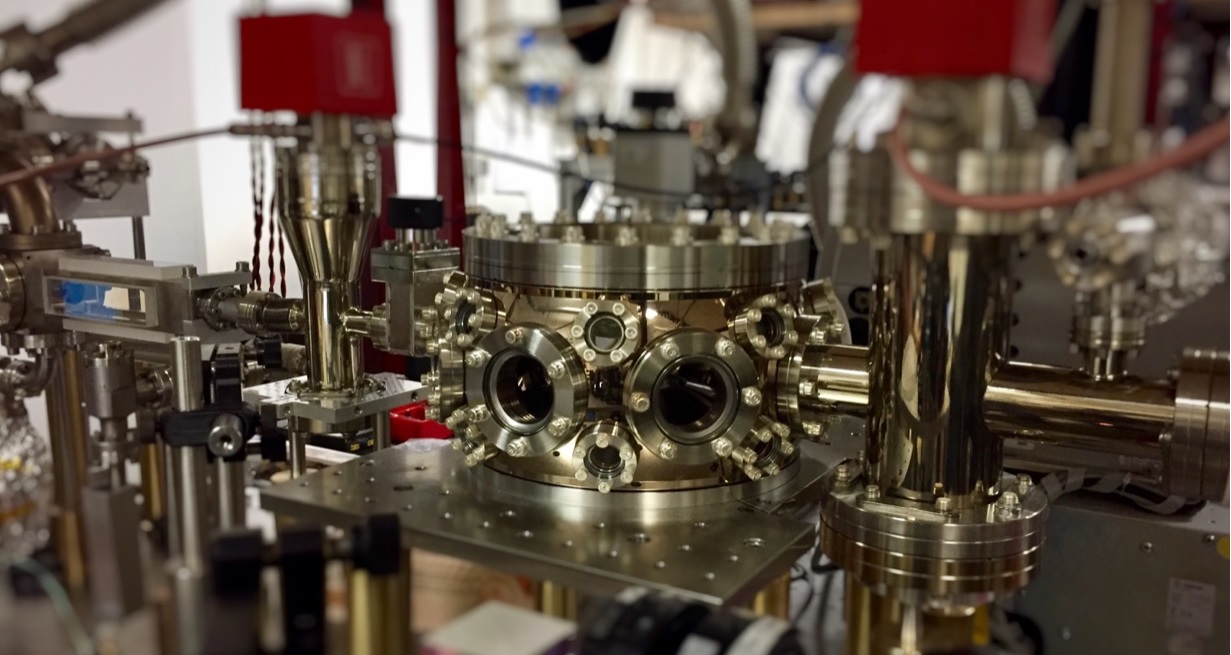 |
We assembled a new vacuum system: a single 2D MOT for both the 87Rb and 41K plus a 3D MOT where we plan to produce a “dimple trap” for the evaporation of the double species condensate. The chamber is provided with re-entrant viewports for high resolution optical access. |
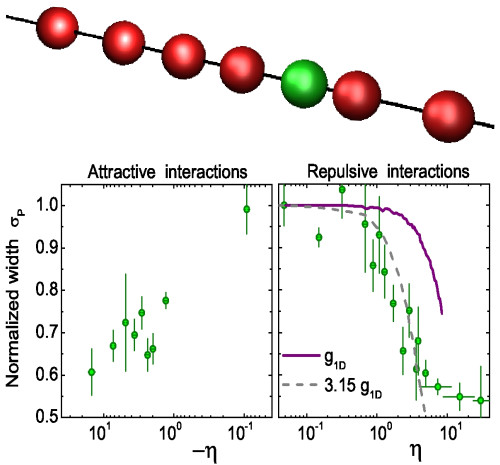 |
In an array of one-dimensional traps, we create impurities of K atoms immersed in reservoir of Rb atoms. The impurities are first localized by an external species-selective potential and then suddenly freed: their subsequent dynamics exhibits "breathing" oscillations, due to a weaker confining potential. We find that the amplitude of these oscillations is reduced when increasing the strength of the impurity-reservoir interaction, irrespective of its sign. We interpret our data with a polaric mass shift model derived following Feynman variational approach. J. Catani et al. |


